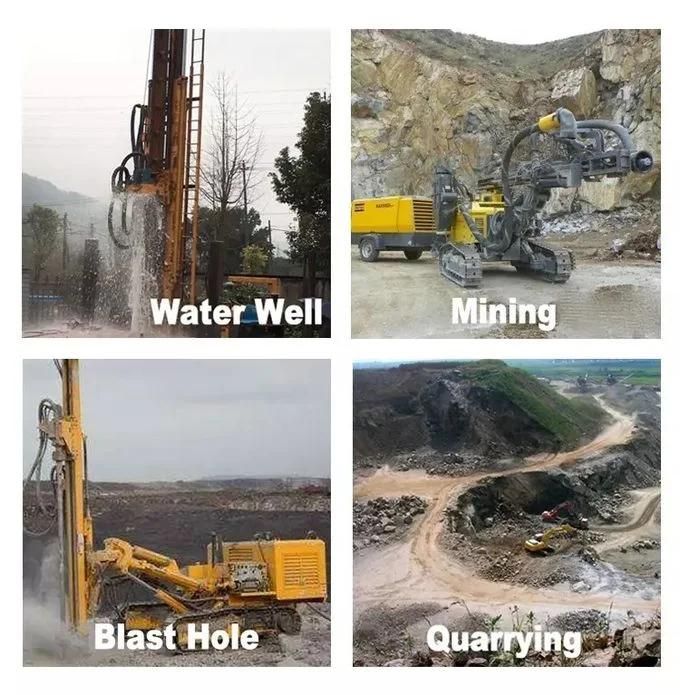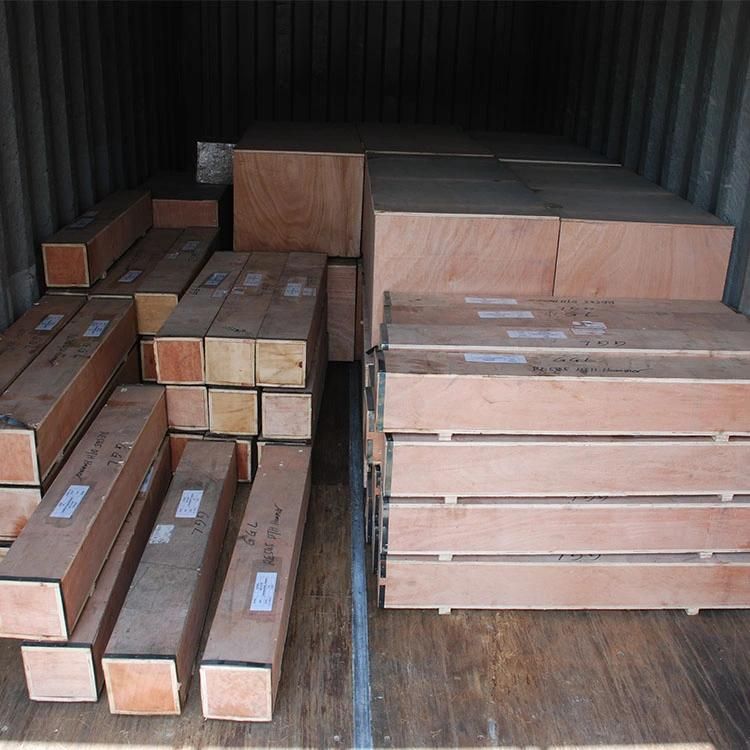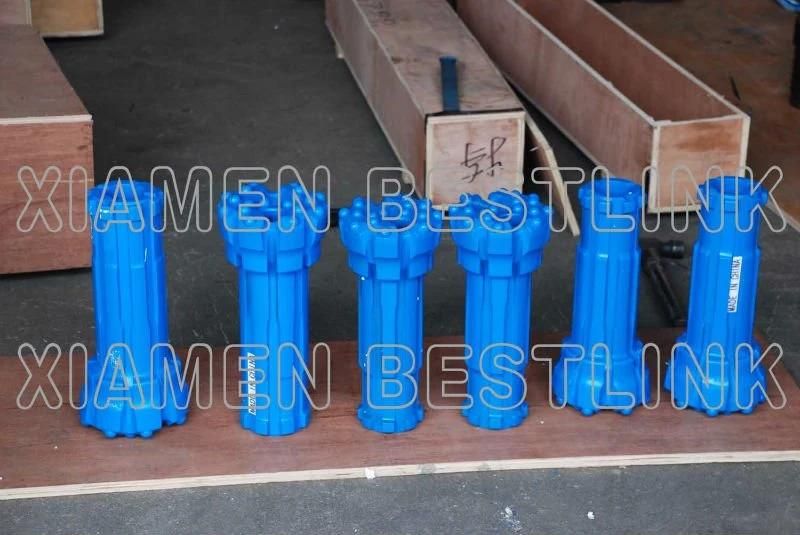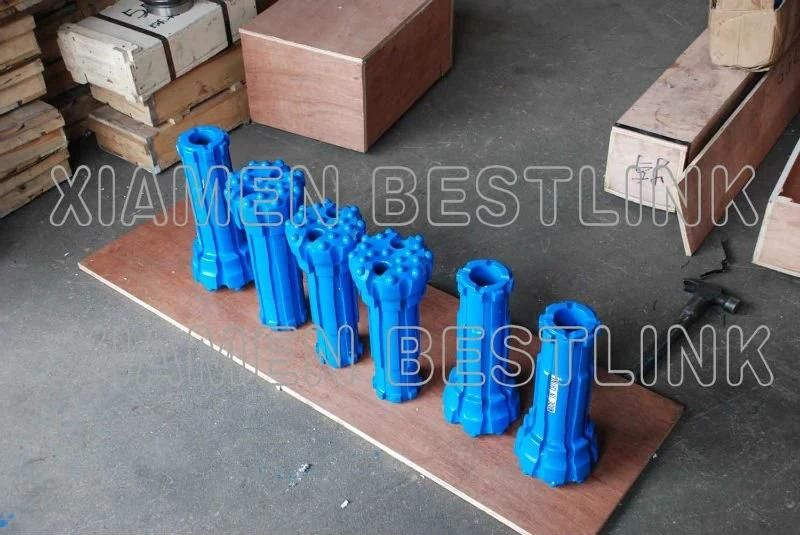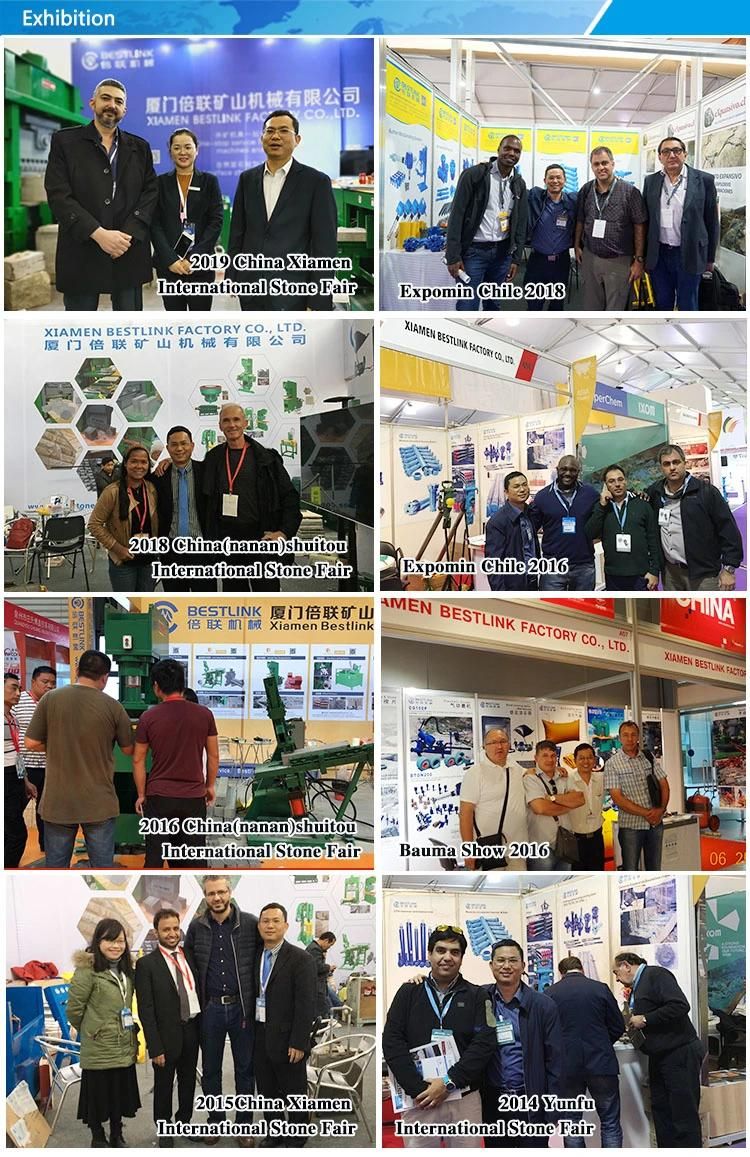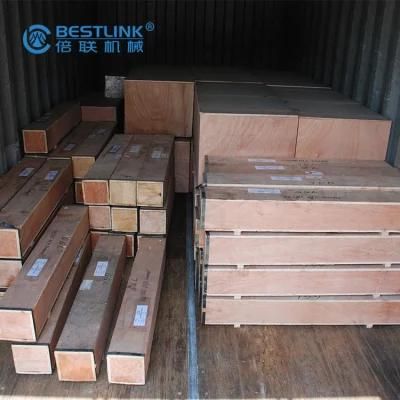
RC Hammers Bits DTH Hammer Bit Reverse Circulation Rock Drill Tools 139mm RC DTH Hammers ...
Xiamen Bestlink Factory Co., Ltd.- After-sales Service:Online Support
- Warranty:6 Months
- Color:as You Request
- Model No.:HRC,RC
- Usage:for DTH Driller
- Material:High Manganese Steel
Base Info
- Model NO.:4 Inch Down The Hole DTH Hammers
- Type:Drilling Machine
- Mining Object:Coal Machinery
- Transport Package:Pallet
- Specification:CE
- Trademark:Bestlink
- Origin:China
- HS Code:82071990
- Production Capacity:5000000PCS Per Year
Description
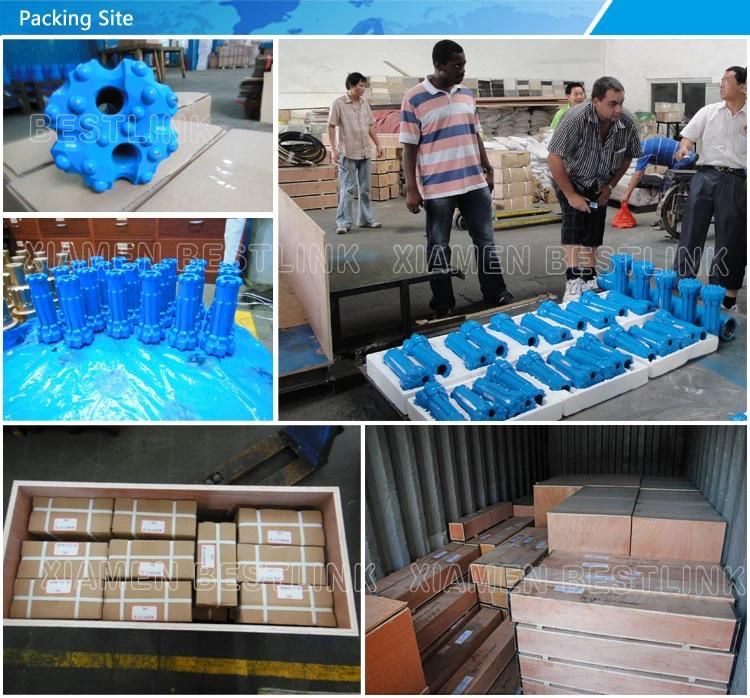
Basics of Reverse Circulation Drilling:
(1) RC drilling uses rods with inner and outer tubes, the drill cuttings are returned to surface inside the rods. The drilling mechanism is a pneumatic reciprocating piston known as a hammer driving a tungsten-steel drill bit.
(2) RC drilling utilizes much larger rigs and machinery and depths of up to 500 meters are routinely achieved. RC drilling ideally produces dry rock chips, as large air compressors dry the rock out ahead of the advancing drill bit.
(3) RC drilling is slower and costlier but achieves better penetration than RAB or air core drilling; it is cheaper than diamond coring and is thus preferred for most mineral exploration work.
(4) Reverse circulation is achieved by blowing air down the annulus of the rod, the differential pressure creating air lift of the water and cuttings up the inner tube which is inside each rod. It reaches the deflector box at the top of the drill string then moves through a sample hose which is attached to the top of the cyclone.
The drill cuttings travel around the inside of the cyclone until they fall through an opening at the bottom and are collected in a sample bag. For any drill hole there will be a large number of sample bags, each one marked to record the location and drilling depth that the sample was obtained.
The collected series of sample bag cuttings are later taken for analysis to determine the mineral composition of the drill hole. The analysis results of each individual bag represents the mineral composition at a particular sample point in the drill hole. Geologists can then survey the drilled ground analysis and make decisions about the value of the overall mineral deposit.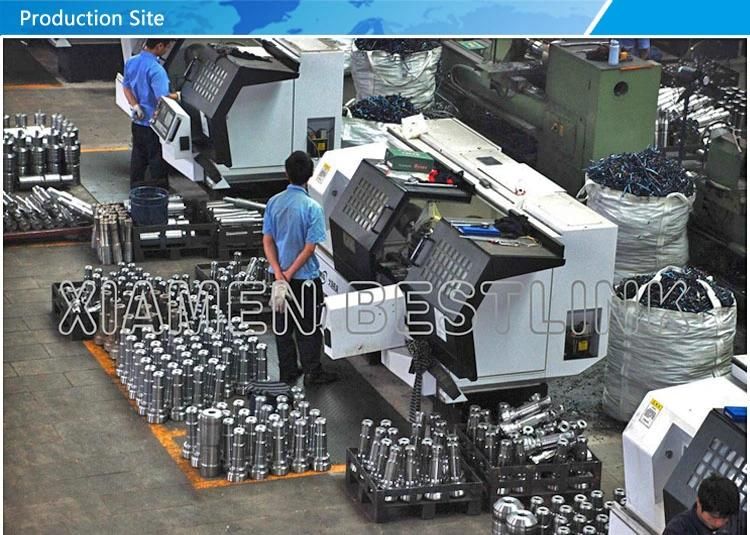
Applications
1. Mine and quarry
2. Road construction for the drilling and blasting work
3. Water well drilling
4. Slope protection